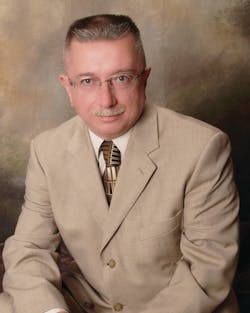According to some, it was prophesied that 2012 would see the end of civilization. That was not to be, but one truism about last year that cannot be denied is that events of 2012 will shape the future of fire service communications.
Perhaps the least known of these was action taken in October by the Federal Communications Commission (FCC) to create a “do not call list” for designated emergency communications numbers. This came in response to growing concern from Public Safety Answering Point (PSAP) managers regarding the number of calls being received from telemarketers, especially auto-dialers. We all know how annoying these calls can be at home. Imagine picking up a line in a busy emergency dispatch center and receiving an offer for aluminum siding or some other product or service. Operating in a similar fashion to the existing do not call residential list, communities must register their numbers and penalties of up to $100,000 per violation can be levied. Processes and procedures are still being defined.
What’s ahead for 9-1-1?
The FCC took a more visible stand in regard to the 9-1-1 emergency number itself with the issuance of a further notice of rulemaking in mid-December. This came on the heels of announcements by major carriers that text-to-9-1-1 could be in place by May 2014. Long a goal of the deaf and hard-of-hearing community, but of technical and operational concern to many in public safety, texting will allow an alternative means to voice for reporting emergencies and becomes the first step in a long chain of changes that will define the Next Generation of 9-1-1.
In its discussions, the FCC addressed some of the outstanding questions concerning this class of service, and made it clear that texting was looked on as an addition to – and not a replacement of – the traditional voice 9-1-1 call. The agency further reinforced that the purpose of this notice was to publicize the future establishment of such service and not an announcement of immediate availability.
The end of 2012 also marked the end of wideband radios. From 2013 onward, affected channels will be “narrowband,” meaning they will take up 50% less spectrum than their predecessors. The good news is that this means more available channels, and radios manufactured for the past several years have been designed with this upgrade in mind.
The bad news? Since this was essentially an unfunded mandate, departments with large older inventories and those that are fiscally strapped were faced with an additional challenge. Prior to the deadline, both New York and Chicago were granted temporary reprieves, but such actions serve only to delay – not stop – the inevitable.
Public safety spectrum
Maybe the biggest news of all was the awarding of spectrum from the 700 MHz “D” block to public safety. This action culminated a multi-year battle, and led to the creation of the First Responder Network Authority (FirstNet). Among those appointed by the acting Secretary of Commerce was Jeff Johnson, a retired fire chief and former president of the International Association of Fire Chiefs (IAFC). While having little immediate or direct impact on the operation of existing local voice public safety radio systems, there is significant potential for long-term improvement in truly nationwide interoperability. Even with the $7 billion authorized, the scope of this project will take lots of time and likely lots more money. The group’s initial challenge: dealing with local and regional projects that had been put on hold pending this legislative action.
Nature’s toll
Finally, the weather often makes the news, and 2012 was no exception. In October, “Superstorm Sandy” hit the Northeast like no other in recent memory. Complaints were voiced regarding the number of duplicate calls dispatched by New York City’s 9-1-1 system during this event, but given the fact that about 20,000 telephone calls per hour were being processed, this has to be taken in context.
Many of the take-aways from this event involved social media. These included the need to plan for a protracted and immediately available online presence to the pervasive power of digital disinformation; such as false reports that a stock exchange floor was underwater. From the private sector, about 25% of cell phone towers and 25% of cable service in 10 states was lost shortly after landfall. Even customers having working wireless networks had to find a place to power up their phones. Carriers in New York established recharging stations for this purpose.
In June, the so-called “derecho” storm hit the mid-Atlantic region, causing widespread disruption of 9-1-1 and prompting a Congressional sub-committee hearing. Among the concerns raised were the need for better and more frequently tested backup telephone power systems and improved monitoring and oversight that would allow for timely assessment of potential major outages.
Regardless of whether it was lessons learned from natural disasters or the culmination of long-term regulatory agendas, 2012 will be remembered as a watershed year for fire service communications. Decisions that were made will have a lasting impact on how we answer and dispatch calls, and eventually communicate with one another other.
For more news and training on technology and communications, visit: http://www.firehouse.com/topics/technology-communications.






